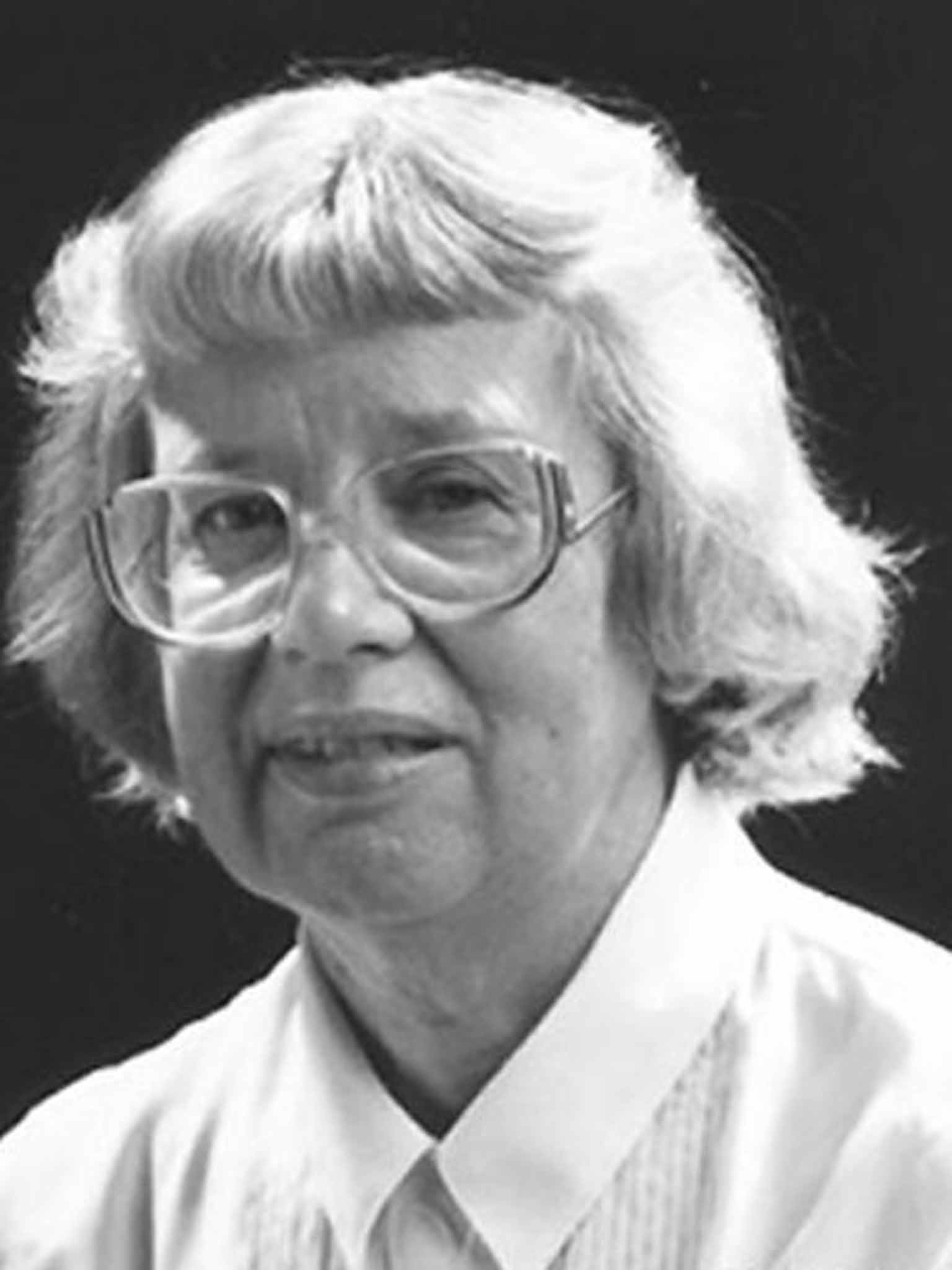Mary Lyon: Groundbreaking scientist whose research led to a leap in our understanding of mammalian genetics

Mary Lyon was born into an era of inequality for women in the work place – yet through sheer endeavour she went on to become one of the foremost geneticists of the 20th century. Her groundbreaking research culminated in the theory of X-chromosome inactivation, an important cytogenetic phenomenon.
This process of X-chromosome inactivation, later known as “Lyonisation” in her honour, led to huge advances in science’s understanding of diseases such as haemophilia and Duchenne Muscular Dystrophy; and her research in mouse genetics contributed to a better understanding of human genetic inheritance – how traits and diseases are passed on.
It was while working on the effects of radiation in 1961 that Lyon’s Nature paper proposed the random but permanent inactivation in early embryonic life of one of the two X-chromosomes in the cells of mammalian females, so the genes were effectively switched off; this explained the mottled or dappled phenotype of female mice heterozygous for coat-colour genes.
The Lyon hypothesis also accounted for the findings that one copy of the X-chromosome in female cells was highly condensed, and that mice with only one copy of the X-chromosome developed as infertile females – but which X-chromosome is inactivated is random and varies from cell to cell. This is how female cats, but not males, can have tortoiseshell coats – there was the presence of two or more genetically distinct types of cells, with some cells responsible for black fur and others determining orange fur.
The theory was later extended to all mammals and led to an explanation for why women who are carriers of X-linked diseases can still show symptoms, such as bruising and excessive bleeding, if carrying the recessive haemophilia gene; and it was one of the first examples of epigenetics, now a scientific field in its own right, whereby changes in the expression of genes are caused not by alterations in the DNA itself, but by non-genetic factors.
Lyon was also renowned for her work on the T-complex – a genetic peculiarity found in wildtype mice – which also came out of work on radiation, as well as her mouse genetics advocacy. She made many other contributions to mammalian genetics. The European Cytogeneticists Association stated, “Mary was among the first to recognise the importance of mouse mutants both as potential models of human disease and for investigating biological processes.”
Born in Norwich in 1925, Mary Frances Lyon was the oldest of three children to Clifford, a civil servant with the Inland Revenue and Louise, a schoolteacher. The family moved around the country with her father’s work, living in Yorkshire and Birmingham before settling in Woking, Surrey at the outbreak of the Second World War. It was while in Birmingham, at King Edward VI Grammar School, that Mary’s interest in biology was first sparked after she entered an essay competition and won a set of nature books.
In 1943, she went on to read Zoology, Physiology and Biochemistry at Girton College, Cambridge, where she was the Turle Scholar (1944) and received the Crewdson Prize (1945). As women did not receive full membership of the university until 1948, she graduated in 1946 with a “titular” degree, one of only 500 women out of over 5,500 students. During this time Lyon was influenced by CH Waddington’s work and became interested in genetics, not yet a degree subject, and became firm in her belief that genes must underlie all embryological development.
Remaining at Cambridge, she began a PhD in genetics with the eccentric but eminent geneticist and statistician Sir Ronald Fisher, but completed her research under the supervision of Douglas Falconer at Edinburgh University, where she had access to better facilities. Upon completion of her PhD in 1950, she was offered a position working with Toby Carter at Edinburgh’s Institute of Animal Genetics, headed by Waddington, to conduct research on mice into the genetic hazards of radiation in the aftermath of the Japan nuclear bombings; there was fear about the harmful effects of fallout in the atmosphere. Some suffered from ataxia, restricting movement; others had inner ear problems and ran in circles with no sense of balance.
In 1954 the team, headed by Carter, moved to the Medical Research Council Radiobiological Research Unit at Harwell, Oxfordshire, where a genetics division was established in order to understand the mechanisms of radiation damage in the atomic era.
Lyon also made major contributions to understanding environmental mutagenesis. Her work on the effects of low-dose radiation on female germ-cells mutation in mammals indicated that only a fraction of mutation is due to low-dose environmental radiation.
In 1962, Lyon took over as head of the genetics section of the radiobiology unit, where she remained until retirement in 1990 – although she continued academic research until 2012. She broadened the expertise of the unit by introducing cytogenetics, work on biochemical genetic markers and early pre and post-implantation mouse embryo manipulation. In 2004 the Mary Lyon Centre, which is a national facility for mouse functional genomics, was opened in order to generate mouse models of human diseases.
Lyon’s accomplishments were recognised with international honours and prizes, including becoming a Foreign Associate of the US National Academy of Sciences, receiving the Royal Medal (1984) from the FRS, the Wolf Prize for Medicine (1997) and the Pearl Meister Greengard Prize (2006), an international award to recognise the accomplishments of outstanding women scientists.
She is survived by her two siblings, Francis and Julia.
Mary Lyon, geneticist: born Norwich 15 May 1925; FRS 1973; died Oxfordshire 25 December 2014.
Subscribe to Independent Premium to bookmark this article
Want to bookmark your favourite articles and stories to read or reference later? Start your Independent Premium subscription today.

Join our commenting forum
Join thought-provoking conversations, follow other Independent readers and see their replies